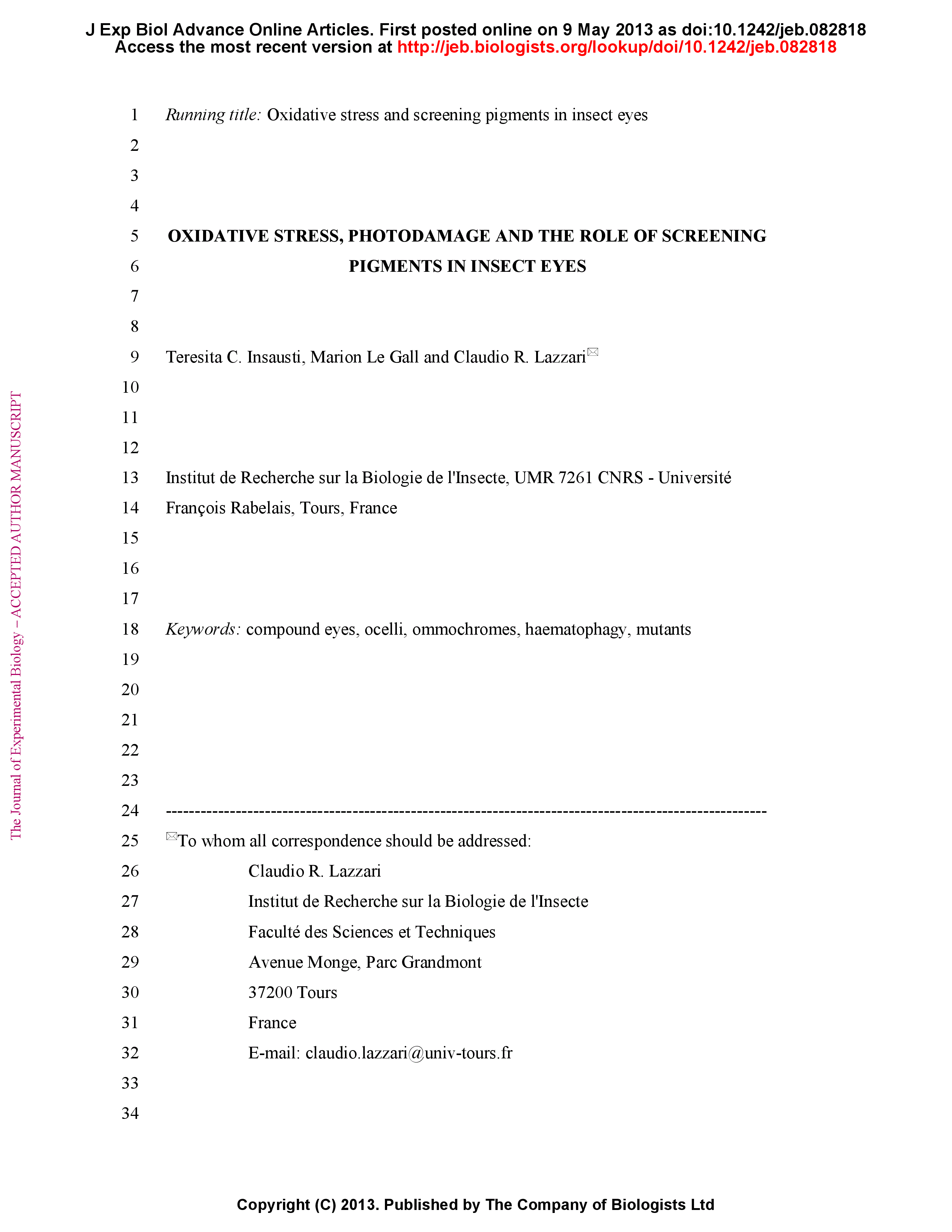Summary
Using triatomine bugs (Hemiptera: Reduvidae) red-eyed mutants, we tested the hypothesis of an alternative function of insect screening pigments against oxidative stress. To tests our hypothesis, we studied the morphological and physiological changes associated with the mutation. We found that wild-type eyes possess great amount of brown and red screening pigment inside the primary and secondary pigment cells as well as in the retinular cells. Red-eyed mutants, however, have only some scarce red granules inside the pigmentary cells. We then compared red-eyed mutants and wild-types visual sensitivity by measuring photonegative responses of insects reared in light/dark cycles (LD 12:12) or constant darkness (DD). Finally, we analyzed both the impact of oxidative stress associated with blood ingestion and photodamage of UV light on the eye retina. We found that red-eyed mutants reared in DD conditions were the most sensitive to the light intensities tested. Retinae of LD reared mutants were gradually damaged over the life cycle while for DD reared insects retinae were conserved intact. No retinal damages were observed on non-fed mutants exposed to UV lights for two weeks while insects fed on blood prior to UV exposition showed clear signs of retinal damage. Wild-type insects exposed to UV-light showed a marked increase in the amount and density of screening pigments.








